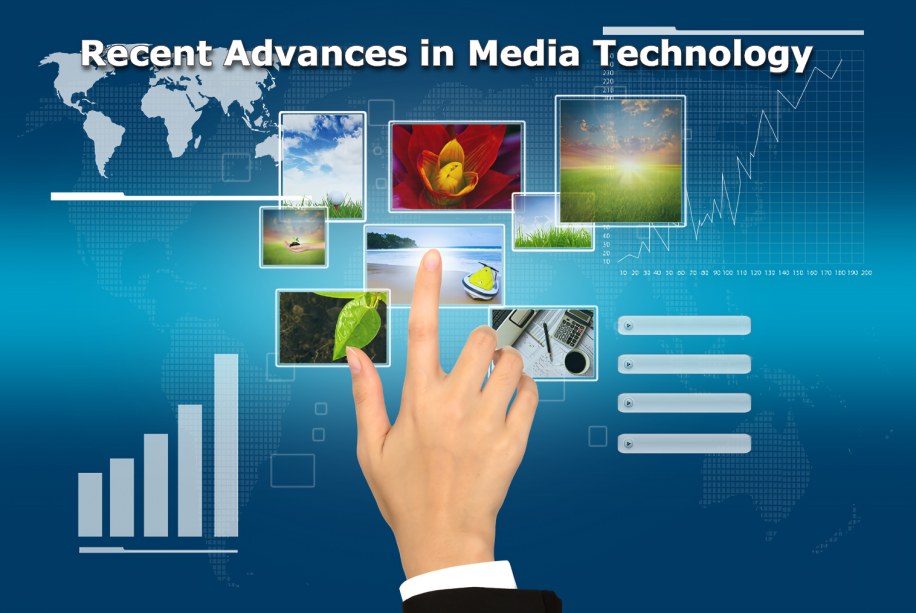Technological breakthroughs are driving an unprecedented rate of change in the media landscape.
From artificial intelligence to augmented reality, recent advances in media technology are reshaping how content is created, distributed, and consumed.
Whether you’re a content creator, a marketer, or simply a media enthusiast, staying updated on these trends is essential.
We’ll look at the most exciting recent developments in media technology and how they have affected the industry in this article.
What is Media Technology?
Media technology refers to the tools, systems, and platforms used to create, distribute, and consume media content. This includes everything from cameras and editing software to streaming platforms and social media networks. In today’s digital age, media technology plays a crucial role in shaping how we communicate, entertain, and inform.
Content creation has become accessible to anyone with a smartphone thanks to the rapid development of media technology. At the same time, it has raised the bar for quality and innovation, pushing professionals to adopt cutting-edge tools and techniques.
Top Recent Advances in Media Technology
Here are some of the most significant recent advances in media technology that are transforming the industry:
1. Artificial Intelligence (AI) in Media
Artificial intelligence is revolutionizing media production and consumption. AI-powered tools are now being used for tasks like video editing, content personalization, and audience analytics. For example:
- AI-Generated Content: Tools like ChatGPT and DALL-E are enabling creators to generate text, images, and even videos with minimal effort.
- Personalization: Streaming platforms like Netflix and Spotify use AI algorithms to recommend content based on user preferences.
- Automation: AI is automating repetitive tasks like video captioning and color grading, saving time and resources.
Impact: AI is making content creation more accessible and efficient while enhancing the consumer experience through personalized recommendations.
2. Extended Reality (XR): AR, VR, and MR
Extended reality (XR), which includes augmented reality (AR), virtual reality (VR), and mixed reality (MR), is creating immersive experiences that blur the line between the physical and digital worlds. Examples include:
- AR Filters: Social media systems like Instagram and Snapchat use AR filters to decorate user-generated content material.
- Virtual Concerts: Artists like Travis Scott and Billie Eilish have hosted digital concert events in structures like Fortnite and VR Chat.
- Immersive Storytelling: Media agencies are the usage of VR to create interactive documentaries and movies.
Impact: XR is transforming entertainment, education, and marketing by offering immersive and engaging experiences.
3. 5G and Enhanced Streaming
The rollout of 5G networks is revolutionizing media consumption by enabling faster, more reliable streaming. With 5G, users can enjoy:
- High-Quality Video: Streaming platforms can supply 4K and 8K video with out buffering.
- Live Streaming: 5G reduces latency, making stay streaming smoother and more interactive.
- New Formats: Technologies like volumetric video, which captures 3-D pix, are getting extra available.
Impact: 5G is enhancing the quality and accessibility of digital content, paving the way for new formats and experiences.
4. Blockchain in Media
Blockchain technology is being used to address challenges like copyright infringement and content monetization. Key applications include:
- Decentralized Platforms: Blockchain allows the introduction of decentralized media structures where creators have more manage over their content material.
- NFTs: Non-fungible tokens (NFTs) are getting used to monetize digital art, track, and motion pictures.
- Transparency: Blockchain affords a obvious and tamper-proof file of content ownership and transactions.
5. Interactive and Shoppable Content
Interactive content is becoming increasingly popular, offering audiences a more engaging experience. Examples include:
-
- Interactive Videos: Platforms like YouTube and TikTok allow users to pick out their own journey or interact with content in real-time.
- Live Shopping: Brands are the usage of live streaming to sell merchandise directly to clients, combining entertainment and trade.
- Gamification: Media businesses are incorporating sport-like factors into their content to enhance engagement.
Impact: Interactive content is driving higher engagement and creating new revenue streams for brands.
6. Cloud-Based Production Tools
Cloud-based tools are making media production more accessible and collaborative. Benefits include:
- Remote Collaboration: Teams can work together on projects from anywhere in the world.
- Cost Efficiency: Cloud-based tools eliminate the need for expensive hardware and software.
- Scalability: Creators can scale their production capabilities based on demand.
Impact: Cloud technology is democratizing media production and enabling smaller teams to compete with larger studios.
Impact on Content Creation and Consumption
These advances in media technology are having a profound impact on both content creators and consumers:
- For Creators: Tools like AI-powered editing software and cloud-based platforms are making content creation faster, more accessible, and cost-effective.
- For Consumers: Personalized recommendations, immersive experiences, and interactive content are enhancing engagement and satisfaction.
Challenges and Ethical Considerations
While these technologies offer immense potential, they also come with challenges:
- Data Privacy: The use of AI and personalization increases worries approximately person statistics and privateness.
- Misinformation: AI-generated content material can make a contribution to the spread of faux news and deepfakes.
- Accessibility: Ensuring that new technologies are inclusive and on hand to all stays a task.
The Future of Media Technology
The future of media technology is full of exciting possibilities. Here are some trends to watch:
- AI and XR Integration: Combining AI with AR and VR for hyper-personalized experiences.
- Decentralized Media: The rise of blockchain-powered platforms that give creators more control.
- Brain-Computer Interfaces: Exploring immersive storytelling through direct neural connections.
FAQs About Recent Advances in Media Technology
1. What is media technology?
Media generation includes gear and systems used to create, distribute, and devour media content material.
2. How is AI utilized in media?
AI is used for content material creation, personalization, and automation in media.
3. What are the benefits of 5G in media?
5G enables quicker streaming, decreased latency, and new codecs like 4K and 8K video.
4. What is interactive content?
Interactive content material allows customers to interact with media, consisting of deciding on their own adventure or participating in stay shopping.
Conclusion
Recent advances in media era are transforming how we create and consume content material.
These innovations are driving engagement, accessibility, and creativity, from AI and XR to 5G and blockchain. Keeping up with these characteristics will be essential to staying ahead of the curve as the industry continues to conform. Which recent development in media technology most excites you? Submit your thoughts in the section below!



